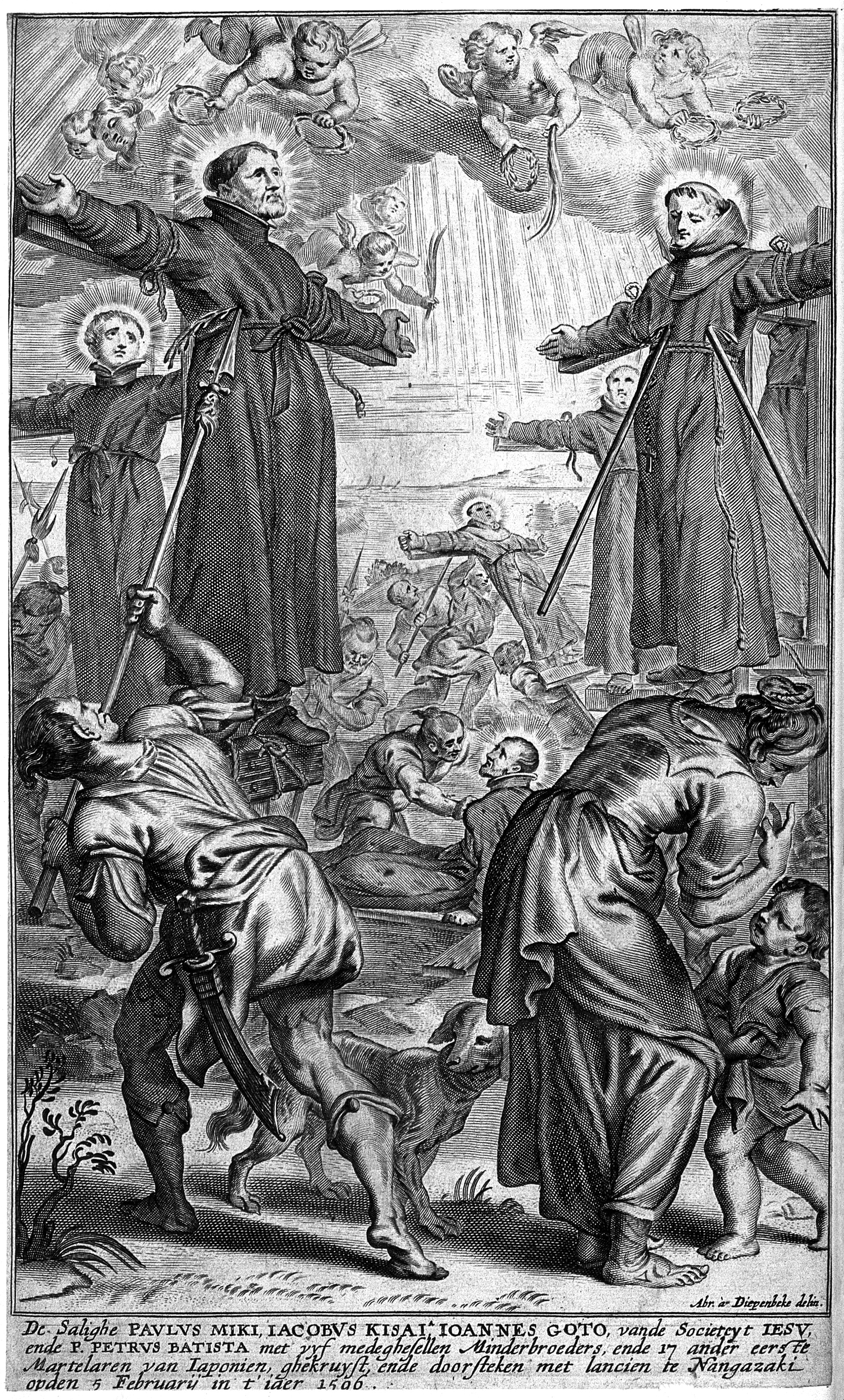
Feb. 6

Toyotomi Hideyoshi, ruling Japan in the name of the emperor, became alarmed at the growth of Christianity resulting from St. Francis Xavier’s mission, begun in 1549, fearing Christian missionaries were part of a conquest ploy by Spain and Portugal.
Because of his orders, 26 Christians had their left ears cut off, were marched through towns with blood dripping from their heads, then were crucified and pierced with lances on a hill overlooking Nagasaki Bay Feb. 6, 1597.
The place was named “Hill of the Martyrs” and is marked with a stone cross and 26 trees. The martyrs were Franciscans, Jesuits, Japanese laymen and one Korean; their bloody garments were kept as relics.
Paul Miki, a distinguished preacher who was the son of a samurai, was the most prominent of the Japanese Jesuits. He was educated by Jesuits and joined the order as a scholastic in 1580. The martyrs were canonized in 1862.
Their feast was added to the General Roman Calendar in 1969, the same year the Diocese of Phoenix was established. They are the patrons of Japan and Japanese Catholics, who are among the ethnic communities in the Diocese of Phoenix.





